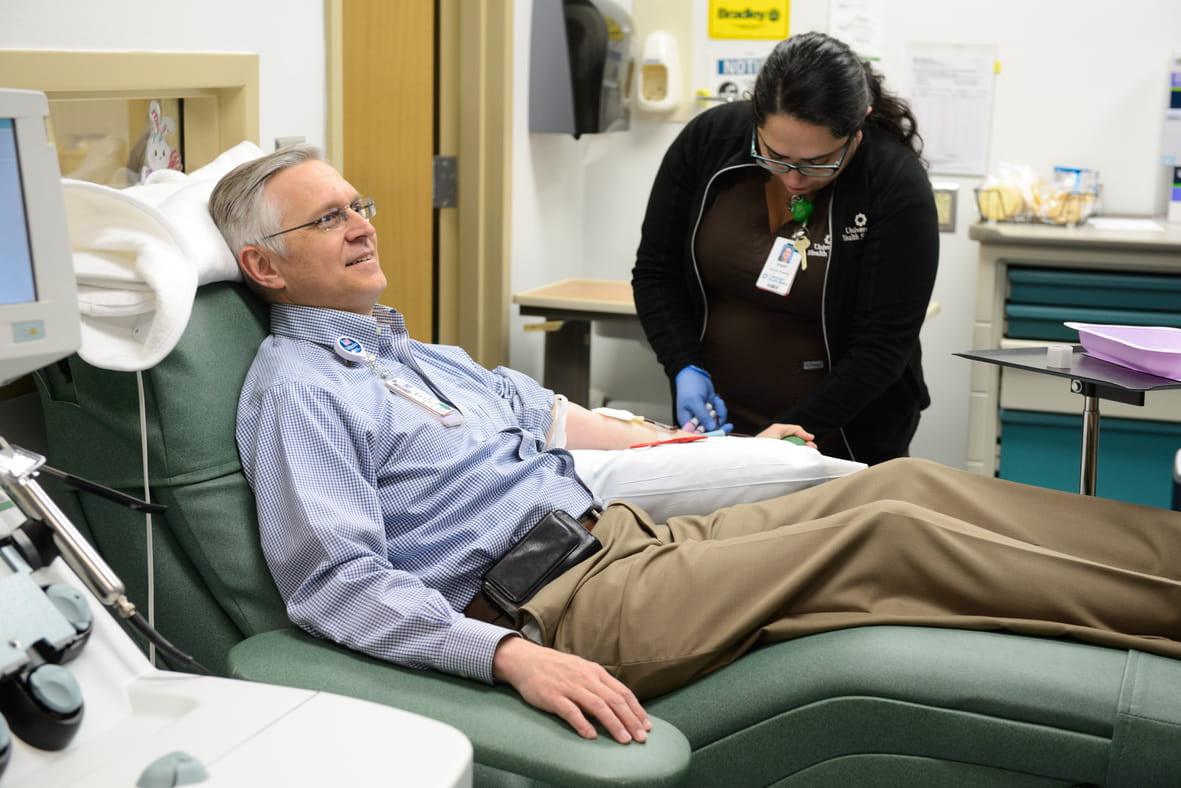According to the American Urological Association, a quarter to a third of men and women in the U.S. suffer from incontinence. So, what exactly is urinary incontinence and what are the treatments for this condition?
There are several different types of urinary incontinence and each is categorized by different symptoms.
The different types of incontinence include:
Stress incontinence - When urine leaks out due to physical exertion including jumping, laughing or coughing. This type of incontinence usually occurs when the urethral sphincter or the pelvic floor muscles have been weakened or damaged, such as during childbirth or heavy lifting.
Overactive bladder (urgency incontinence) - When you feel the need to go even when your bladder isn’t full. Usually this condition includes the inability to hold urination before reaching a bathroom.
Mixed incontinence - When there are symptoms of both overactive bladder and stress incontinence.
Overflow incontinence - The inability to completely empty the bladder - often because of prostate enlargement - which leads to leakage once you hit a maximum capacity.
Functional incontinence - If the urinary tract functions properly, but there are other physical conditions that are preventing someone from reaching a toilet including: illness, medications, dementia or other medical conditions.
Reflex incontinence - When the bladder muscle contracts and urine leaks without any warning or the urge to go. This condition often occurs in people who have multiple sclerosis, spinal injuries or other severe medical conditions or illness.
How do I know if I have urinary incontinence?
Each type of urinary incontinence has its own list of symptoms. However, you may want to speak to a doctor if you experience any of the following general symptoms:
- Sudden, strong urge to urinate that you can’t control
- Frequent, small urinations and constant urine dribbling
- Urine leaks when you do any type of physical exertion including sneezing, coughing or laughing
- Inability to make it to the restroom in time to empty your bladder
Some incontinence can be temporary and caused by medications, irritation, vaginal infections and urinary tract infections. However, as with any medical condition, seek medical help immediately if you are suffering from any of the symptoms mentioned above.
Pregnancy and incontinence
During pregnancy, many women leak urine between trips to the bathroom. This type of incontinency is considered stress incontinence since most women have trouble controlling their urination when they laugh, sneeze or cough.
If you have urinary incontinence during pregnancy, don’t worry. This common condition in pregnant women occurs because the baby puts extra stress on the pelvic floor muscles and the bladder. Usually, the condition improves once the baby is born. If it doesn't, you should seek medical care.
Urinary incontinence treatments
Certain behavior changes like avoiding caffeine and trying to urinate every few hours to avoid accidents could help your urinary incontinence. There are also specific medications for overactive bladder that can relieve symptoms and reduce episodes of urgency incontinence. If conservative treatments and medications do not work for you, there are other options.
Bladder injections with botulinum toxin (Botox) can be helpful in people with severe urinary incontinence because it can freeze the muscles in the bladder, thus reducing the urge to go.
Sacral nerve stimulation can be very helpful in relieving incontinence symptoms. A thin wire is used to help regulate the nerve impulses sent to your bladder.
Treatments including absorbent products such as pads and adult diapers can help men and women manage their urinary incontinence. These products can absorb urine and help keep skin and clothes dry. When choosing an incontinence product, make sure to consider ease of use and cost.
There are also toilet substitutes including portable devices that can be helpful if you can’t make it to the restroom in time. Bed pans and urinals are especially helpful if you are unable to get to the bathroom at night or if you're traveling.
It’s important to remember to take good care of your skin when using incontinence products since they can cause rashes, skin breakdown and even infection. Make sure to always keep your skin clean and speak to a doctor if you notice any abnormal skin conditions or irritation.
Pelvic floor rehabilitation at University Hospital
Pelvic floor rehabilitation, under the guidance of a specially trained physical therapist, consists of exercises to activate pelvic floor muscles under the uterus, bladder and large intestines; manual therapy; education and functional activities to improve continence and quality of life.
Many individuals can drastically reduce their leakage and stay dryer longer after completing pelvic floor physical therapy.
Surgical treatments for incontinence
There are several surgical procedures that can help treat stress incontinence including:
- A sling procedure - in which a surgeon uses strips of synthetic mesh or human tissue to create a sling under the tube that carries urine from the bladder to the bladder neck.
- Suspension procedures - the surgeon makes an incision in your lower abdomen and secures stitches in the bladder neck. This reinforces the bladder neck so that it doesn’t sag and helps prevent urine from leaking.
Though surgery can be a great option for those with urinary incontinence, make sure to discuss all of your medical history with your doctor to make sure you're a good candidate for surgery.
The urology and urogynecology specialists at University Health are focused on getting you back to feeling like your regular self. We understand that some urological conditions may cause embarrassment so we offer compassionate, expert care to help minimize the effects these conditions may have on your life. For more information, call 210-358-9600.




